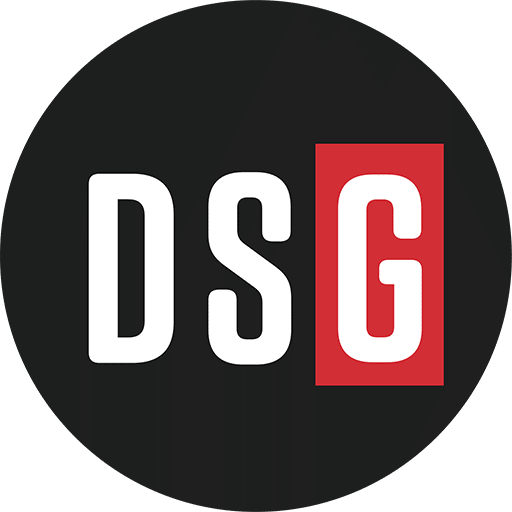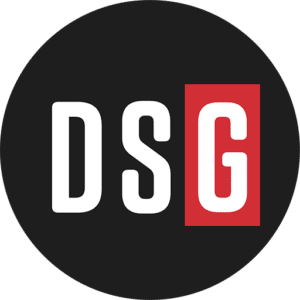Did you miss our distribution leader panel on how exceptional customer experience powers growth and profits? Watch now.
Customer experience has emerged as a critical differentiator for distributors, with the power to significantly affect a company’s growth and profitability.
Jonathan Bein Ph.D., Managing Partner of Distribution Strategy Group, hosted a recent panel discussion on customer experience. The discussion included contributions from:
- Corey Hiegel, Director of Customer Service, Palmer-Donavin
- Jennifer Jubin, Vice President of Customer Experience, COE Distributing
- Joann Stitzer, Vice President of Customer and Associate Engagement, Benco Dental
- Jennifer Johnson, Vice President of Operations and Customer Experience, Motion & Control Enterprises (MCE)
Is Customer Experience Too Important to Leave to One Department?
Distributors understand customer experience is about more than the product. A distributor’s differentiator lies in their customer service, how they engage with customers, their value-added services and the application expertise they provide.
Customers expect timely delivery, personalized experiences, efficient problem-solving and proactive engagement.
By harnessing the power of data, distributors can uncover actionable insights that drive product improvements, optimize inventory management and identify cross-selling or upselling opportunities. This data can enhance customer satisfaction and streamline operations, ultimately contributing to higher profitability.
It’s a complex set of tasks to master in an omnichannel world. “We’ve created a technical support team and a large customer service team devoted to CX that walks side-by-side with outside sales reps to give everyone the support they need,” Johnson said.
Their primary goal, however, was to standardize across the business. This was more challenging because MCE has acquired several companies. Standardization created repeatable support processes that enabled the measurement of customer experience across these businesses within the enterprise.
Palmer-Donavin centered their CX mandate at their department head level. “We work with each department on how they impact the customer,” Hiegel said.
Stitzer agreed that cross-departmental collaboration is critical to these initiatives. “We’re definitely looking at it with the lens of a partnership across functions, not just in its own silos. We have 26 customer advocates across the United States as well to support that lens.”
Employee Experience and Customer Experience — Both Are Important
Jubin’s team focuses on their external customers and their experience with her company, as well as internal customers.
“I think it’s important for all employees, regardless of the department and their role, to have a good experience. Measuring how we treat each other — are you treating internal customers just as you would your external customers? If you’re always acting like that, it will naturally become an extension of how you treat external customers. If you start tracking employee engagement and customer satisfaction, they should run parallel.”
Supporting a positive employee experience is linked to positive customer experience.
There’s research that backs this approach. EX and CX together become an unbeatable methodology for growing a company.
Challenges in Customer Experience
Exceptional customer experience doesn’t just happen by chance; it requires a concerted effort to align processes, technology and people.
Getting that alignment is sometimes tricky. “You have so many moving parts in any organization. I might have this grand idea, but roadblocks can prevent implementation,” Hiegel said. “We need to make sure we’re doing a good job of getting all departments involved.”
Johnson agreed. “When we think about how we carry employees through the customer journey, we’ve uncovered the dire need to document all processes. Whether it’s the execution of something the CX organization does or sales, this documentation seems to help bring together cross-functional teams. It’s a partnership from everyone across the business.”
But she points out the reality of CX; it’s a journey for everyone involved. “Good CX initiatives start with a foundation of understanding how everybody is integrated.”
Tracking the Customer Experience
Measuring CX requires quantitative and qualitative methods, and a commitment to continuous improvement. The panelists described their efforts for tracking the touchpoints in each customer journey.
They focused on three metrics:
- Net Promoter Score (NPS) to measure customer loyalty and satisfaction.
- Customer Satisfaction Surveys (CSAT) provide an individual accounting of satisfaction within a specific customer encounter.
- Operational Data could include response and resolution times, repeat business, order accuracy, product availability and more.
Jubin pointed out the volume of data companies capture can create its own roadblocks. “It can be a lot. I think that’s why new positions are being created focusing on CX. We look at NPS and CSAT regularly. But as far as operational data goes, we know from surveys that having stock on hand so customers can receive shipments quickly is important. So, we monitor how quickly we ship as a CX benchmark.
“Return rates are another big one for us, specifically why was the item returned? We dig into that. It leads to ultimately higher customer satisfaction and higher sales. We have numbers, but the question is: How do we tell a story from those numbers?”
Stitzer says Benco Dental’s primary measurement is NPS, but they also look at customer satisfaction across the buying journey. “We’re looking for performance gaps against NPS scores, taking some operational data and blending it into one dashboard to help tell a story.” Her team pays attention to return rates, customer retention, contact ratios, first-call resolution and more.
“There’s a lot of key variables that drive your overall customer satisfaction. My dashboards change almost quarterly with our customers. Just when you’re comfortable, your numbers will change. You have to stay agile.”
Hiegel agreed, adding, “The biggest thing is taking any survey you do and acting on it. A survey gives you an idea, but that measurement requires action.”
NPS vs CSAT: Which is Better?
Jubin views CSAT as more reliable. “It’s just been more predictable when linked with other outcomes. But sometimes you know it’s not going to be reliable. For example, during the height of our supply chain issues, people were unhappy because nobody had any stock. We’ve seen both scores consistently rise since then, but I find the devil is in the details. Finding those open-ended responses and combing through them is quite enlightening. If there are consistent responses, you’re on to something there.”
Stitzer said NPS is a great relationship measurement at the top level. “CSAT is great when you’ve gone through your customer journey, mapped key touchpoints and understand your personas. CSAT gives customer satisfaction for a specific touchpoint and in-the-moment snapshot of a specific transaction. The question is: Do you want to know about the transaction, a specific moment in time or do you want to know about the journey? Then understand where they meet and marry at the end because they will tell a story.”
Does Customer Size Change Customer Care?
An audience member asked an important question: Does the size of the customer dictate their experience and the care they receive? It’s an essential question for resource-strapped organizations that, by necessity, must focus on enterprise-level customers and primary revenue drivers.
Hiegel tries to have his team focus on consistent CX across the board. “We’re not treating any customer differently according to how big they are. You want to and will take care of all customers, but you must have a strategy for how you size and service customers in emergencies. What makes a big customer big? It’s not all sales. We have a lot of customers. One thing we’ve done for smaller accounts is dedicated an inside CSR to still give them the service and the touch points.”
Johnson’s team has three layers. “We thought of ways to make it more complex, but we landed on something fairly simple, with an aligned core team to support our inside CSR to ensure we have a regular cadence to keep that engagement and keep churn scores down.”
Digital Strategies to Enhance Customer Service
The panelists are at different levels in their digital strategies to enhance customer care.
“One thing that sticks out is our ecommerce platform,” Hiegel said. “It got a facelift about five years ago. The building materials industry sometimes gets called ‘old school,’ but once our customers use the ecommerce platform, they really gravitate to it.”
Jubin’s company modernized its ecommerce platform more recently, saying, “We’re pushing to have our customers order online. Every customer is different, and it’s a customized conversation and training on changing their processes.”
How Do You Show the Value of Customer Experience?
The panelists agreed that any CX initiative must prove its worth. “Customer retention is the biggest way to show value,” Johnson said. “Our ability to keep customers engaged and buying in the patterns they’ve grown accustomed to shows our worth. The other is expansion. Our ability to cross-sell across all our products faster to generate revenue is key.”
Jubin agreed. “We’re hyper-focused on sales. We can break it down further to customer retention, but we look at order size, ordering frequency, and whether a customer’s activity changed. That’s how we show value.”


